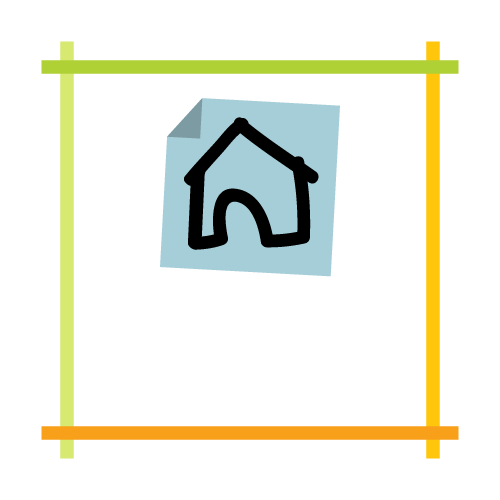
What Kanban is and how we’ve used elements of it in Home Scrum
Kanban’s similar-but-different approach
Kanban is a similar system to Scrum that is meant to help visualise your workflow and improve it based on empirical feedback from reality. Instead of using story points, Kanban focuses on counting how many tasks flow through the system, and how ‘old’ each ticket is (that is, how long it’s taken to move from ‘to do’ into ‘done’). This is then used to find the average length of time for a task to be done, and this is the figure that you aim to improve.
Calculating the above figures is usually done automatically via digital tools that emulate the board virtually. For those of us sticking to a physical version, all this counting and finding averages can be a bit much. The best way I came up with doing it is to add a small dot to the bottom of each ticket that is still in ‘doing’ at each daily Scrum. Then in place of the ‘burn-up chart’, you can keep a running tally of the number of tasks done and the total number of ‘age dots’ from these tasks. At a certain fixed interval, e.g. weekly, you can divide the total number of age dots by the number of tasks done, and this way get your current average number of days it’s taking to do a single task.
Although we have tried the above approach, and while working on the average speed of a task seems like a potentially more useful number than an arbitrary number of ‘effort points,’ we didn’t get far with this way of tracking our success. It wasn’t very compelling to Francis and it seemed like quite a lot of work even with our streamlined approach. However, there still could be other aspects of Kanban that you might like to adopt.
Kanban has several similar features to Scrum, including a task board where tickets go through columns left to right, but there are no sprints. Instead, the backlog is continually updated with whatever new tasks come up, but it’s also kept in a strict priority order, and you’re only meant to take tasks from the top of the list.

Perhaps the most defining characteristic of Kanban is that each column on your board (which represents how the work flows through stages to completion) is given a ‘work-in-progress limit.’ This is simply a maximum number of tasks allowed in each column at a time. For instance, maybe each person is only allowed to select seven tasks to include in their day’s plan. This approach definitely helps in keeping tasks moving forward and making sure that things don’t feel too overwhelming, although it takes discipline to actually stick to. (There’s always at least one more task that seems absolutely vital to include!) It can get frustrating to have to choose to limit yourself like this, but the whole reason for it is that it helps tasks move through the board quicker.
There is also an important rule: you’re not supposed to move any task backwards to the previous column. If something gets stuck, it means it will start to get old and impact your overall average, and so the entire team is meant to focus on ways to unblock that task and get things moving again.
It’s worth noting that Scrum and Kanban have even worked together to produce an official guide for how to combine the two. There is also a good book about using Kanban outside work called ‘Personal Kanban’.







